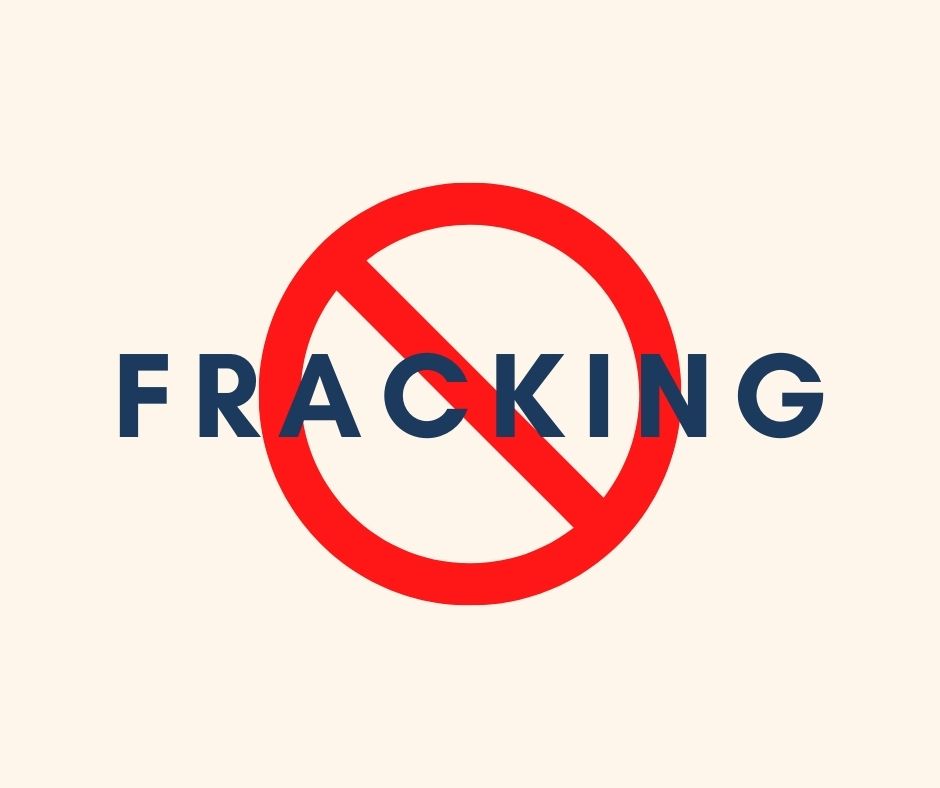In this episode, we do a deeper dive on the issue of a fracking ban on federal lands that Joe Biden has talked about implementing if he gets elected president in 2020. We briefly mentioned this in our October 2020 Mineral Rights News Episode but today we wanted to do a deep dive on this important topic.
To help you understand what this might mean for the value of your mineral rights and for the future royalties that you might receive, we look at what it would mean for the oil & gas industry, the states that would be impacted the most, and the takeaway for mineral and royalty owners. You might be surprised at what we have to say.
Using the embedded player above, you can download the episode to your computer or listen to it here! Be sure to also subscribe on Apple Podcasts or wherever you get your podcasts!
Joe Biden’s Energy Policy
Looking at the second presidential debate where energy and climate were one of the main topics discussed, here’s what Biden said:
“I would transition from the oil industry” . . . ”because the oil industry pollutes significantly.”
Joe Biden, 2nd Presidential Debate, October 22, 2020
Most recently, over the weekend following the debate, Biden said that he supports a fracking ban on federal lands and waters.
It is hard to know exactly what a Biden presidency would do from a policy standpoint since they have gone back and forth saying they wouldn’t ban fracking then saying they would, then saying they would stop issuing new drilling permits on federal lands. What is clear is that they want to transition away from the oil & gas industry and towards solar and wind.
To help mineral and royalty owners understand what this might mean for the value of your property and for the future royalties that you might receive, we are going to do a deep dive into the numbers around what this would mean for the industry as a whole, the states that would be impacted the most, and then at the end, I’ll talk about the takeaway for mineral and royalty owners and you might be surprised at what I have to say.
The Impact of a Federal Fracking Ban on the Oil & Gas Industry
But before that, here’s what a fracking ban on federal lands would mean for the US oil & gas industry. The following data was taken from the American Petroleum Institute (API) who did a study on the impacts of a federal leasing and development ban:
Energy Security Impacts
- U.S. oil imports from foreign sources could increase by 2 million barrels a day by 2030
- Annual U.S. natural gas exports could decrease by 800 billion cubic feet by 2030
- U.S. offshore natural gas and oil production could decrease by 68% and 44% respectively
Economic Impacts
- U.S. GDP could decline by a cumulative $700 billion by 2030
- Nearly 1 million jobs could be lost by 2022
- U.S. households could spend a cumulative $19 billion more on energy by 2030
- Over $9 billion in government revenue could be at risk
Environmental Impacts
- National U.S. CO2 emissions could increase by an average of 58 million metric tons and keep rising to represent a 5.5% increase in the power sector by 2030
- Current transition from coal to natural gas could be delayed, keeping half the coal capacity that would otherwise be retired by 2030
- Total U.S. coal use could increase by 15% by 2030
Loss of Global Market Share
According to the EIA Annual U.S. crude oil production reached a record level at 12.23 million barrels per day in 2019. To put this in perspective, US oil production was only 5.4 million barrels per day in 2010. And we were the top oil producing country in the world in 2019, ahead of Saudi Arabia and Russia who are close behind. If we stop the domestic oil & gas industry, we would effectively be allowing Saudi Arabia, Russia, and China to take that market share and we would likely never get it back.
States That Would Be Affected by a Federal Fracking Ban
That summarizes the impact at a national level but where would these impacts be felt the most? Logic would say that the states where there is the highest amount of production from federal acreage would feel the most severe impacts.
To help understand the impact on the oil & gas industry by state, it is important to look at the data. To show what states have the most exposure to federal oil & gas leases, we took a look at the top 10 states with the largest number of leases, the most acreage covered by federal leases, the largest number of producing leases, and where the most drilling permits have been issued which is a proxy for future drilling activity and where the impact would likely be felt first.
All data was taken from the BLM as of 2018 (the latest data available):
States with the Largest Number of Federal Oil & Gas Leases
| State | Number of Leases |
| Wyoming | 12,780 |
| New Mexico | 7,808 |
| Colorado | 3,703 |
| Montana | 2,821 |
| Utah | 2,752 |
| North Dakota | 1,741 |
| Oklahoma | 1,120 |
| Arkansas | 584 |
| Texas | 582 |
| Louisiana | 558 |
Total Number of Acres Contained in Leases Considered in Effect
| State | Number of Acres |
| Wyoming | 8,084,177 |
| New Mexico | 4,291,920 |
| Colorado | 2,692,029 |
| Utah | 2,592,448 |
| Montana | 2,100,155 |
| Alaska | 1,490,733 |
| Nevada | 881,252 |
| North Dakota | 829,048 |
| Arkansas | 385,651 |
| Texas | 346,545 |
Number of Producing Federal Leases by State
| State | Number of Leases |
| Wyoming | 7,550 |
| New Mexico | 6,687 |
| Colorado | 2,204 |
| Utah | 1,498 |
| Montana | 1,423 |
| North Dakota | 1,349 |
| Oklahoma | 979 |
| Kansas | 435 |
| California | 313 |
| Texas | 297 |
Number of Approved Drilling Permits by State
| State | Number of Permits |
| New Mexico | 1,198 |
| Wyoming | 1,120 |
| Colorado | 402 |
| North Dakota | 331 |
| Utah | 125 |
| California | 117 |
| Texas | 33 |
| Oklahoma | 19 |
| Montana | 14 |
| Alaska | 10 |
So it appears that New Mexico, Wyoming, Colorado, Montana, and Utah would be the 5 states hit the hardest. But also North Dakota appears to be at the top of the list.
Now, putting federal acreage aside for a minute, the assumption here is that the industry would continue to recover and that oil prices would be at a level where companies would be looking to drill new wells. It may be a year or two before we are in this position as companies restructure their balance sheets, consolidation occurs, etc.
But I do believe this will be the case that we will be in a position where new drilling will occur over the next several years. Until then, the ban would largely be a moot point since companies won’t drill uneconomic wells. But assuming things do recover then I think the federal ban would have a negative impact on the US economy as the API report showed.
Also, it is important to note that the loss of oil and gas production within the US would simply be offset by foreign sources so it is not like we are eliminating the potential emissions from the production of these barrels of oil or billions of cubic feet of gas. We would just be exporting carbon emissions to countries that have less stringent environmental regulations than the US.
Make no mistake, there will be a certain level of demand for fossil fuels over the next decade that will be either met incrementally by US production or by production from the likes of Saudi Arabia or Russia, or Iraq or other OPEC countries. International oil & gas companies would likely feel a smaller impact from this than companies based 100% in the US. In other words, international companies would be making the decision to invest in foreign projects vs. domestic projects whereas US operators with a large percentage of leases on federal lands would be impacted the most.
Basins and Plays that Might Be Affected By a Fracking Ban
- Wyoming – Powder River Basin – Converse and Campbell counties, lesser extent DJ Basin. Pinedale Anticline and Jonah field big natural gas plays. In fact, Wyoming contributes 38% of natural gas produced on federal lands nationwide and 16% of oil production. Almost half the state is considered public lands, large amount of revenue generated for the state by oil & gas production. Within the state, 51% of oil is drilled on public land, and 92% of natural gas comes from federal land so it would be a big hit to the economy.
- New Mexico – San Juan Basin would be hit hard but also a significant amount of oil is produced from federal lands in the Permian basin. In fact, New Mexico accounts for 57 percent of federal onshore oil production and 31 percent of onshore natural gas production, and is projected to be among the states hardest hit by a ban on oil & gas development on federal lands.
- Utah – Uinta Basin
- Colorado – Most oil production on federal lands is in the DJ Basin in Weld County. Most of the gas produced on federal acreage is in Dolores County in the San Juan basin in Southwest Colorado. Also, federal lands in the Piceance Basin in Western Colorado where natural gas is produced would be impacted.
A significant portion of the revenue generated from federal mineral leases goes to the states where those leases are located. And a good part of those funds go to public schools, according to the Denver Post, the state of Colorado got 49% of the revenue from these public lands in 2019.
So it is clear that this would be bad for the industry as a whole and for the economy in these states.
It remains to be seen whether the federal government allow some states to request a waiver from the fracking ban. The Democratic governor of New Mexico, Michelle Lujan Grisham has indicated that she would seek a waiver if this were implemented.
Impact of Federal Fracking Ban on Mineral Rights Owners
But it may not be all doom and gloom from a mineral owner perspective, assuming your minerals are not part of any federal units in these areas.
A federal unit is where federal oil and gas leases are pooled and unitized to combine small tracts for the purpose of committing enough acreage to facilitate development in a continuous manner. Sometimes these units include fee acreage and so you would have an interest in any wells drilled within the unit based on your proportional share of the acreage in the unit.
If you have fee minerals in a unit that is primarily federal acreage and there is a ban on either issuing new permits or fracking on federal lands then it would be negative from a private mineral owner point of view.
This is because no new wells would be drilled say over the next 4 years and so the value of your property would go down since the value of minerals is largely based on the future royalty earning potential and since that number would be 0 within that time period, it would have a negative impact on the value of your minerals. If you are receiving existing royalties or if the unit is fully developed those existing royalties I would assume would be safe since what has been talked about is related to new activity.
Silver Lining for Fee Minerals
For everyone else, if companies have a certain amount of money to spend and they have a mix of federal acreage and private acreage and assuming there is enough undeveloped acreage on fee minerals (akak private minerals) then it could actually be beneficial for mineral owners in these areas.
This is because all things being equal with respect to the quality of the rock and economics of these new wells, it might have the effect of accelerating development of this private acreage because they need to drill wells to maintain production from these shale basins. Assuming it is profitable to do so, it could be a benefit to some private mineral owners.
That said, if there are too many issues in these basins or plays with a large amount of exposure to federal lands, it could cause companies to invest in other areas where the economics are similar but there are lower non-technical risks. Oklahoma, Texas, and Louisiana being the three states in my mind with lower exposure to federal leases (at least onshore) so they may see an increase in spending in SCOOP/STACK, Haynesville in Louisiana, Texas side of the Permian Basin and Eagle Ford in Texas if companies say have the choice to invest in one of those basins vs. federal acreage in the DJ Basin or Powder River or Uintah Basin.
Summing It All Up
It is clear that a ban would be bad for the oil & gas industry as a whole. The areas with significant federal acreage would be hit the hardest and mineral owners with exposure to federal drilling units would be negatively impacted.
If investment shifts away from these federal lands towards fee minerals, those mineral owners benefitting from this acceleration in the drilling of wells on their property may actually see an increase in value.
What do you think? Send us an email or leave a comment below!
Thanks for Listening!
To share your thoughts:
- Leave a comment or question below (we read each one and your question may be featured in a future episode)!
- Ask a question or leave us feedback via email or voicemail: (720) 580-2088.
To help out the show:
- Subscribe and leave a review on Apple Podcasts or wherever you get your podcasts – we read each one and greatly appreciate it. Plus, you can get a shout out on a future episode!
Thanks again – until next time!




